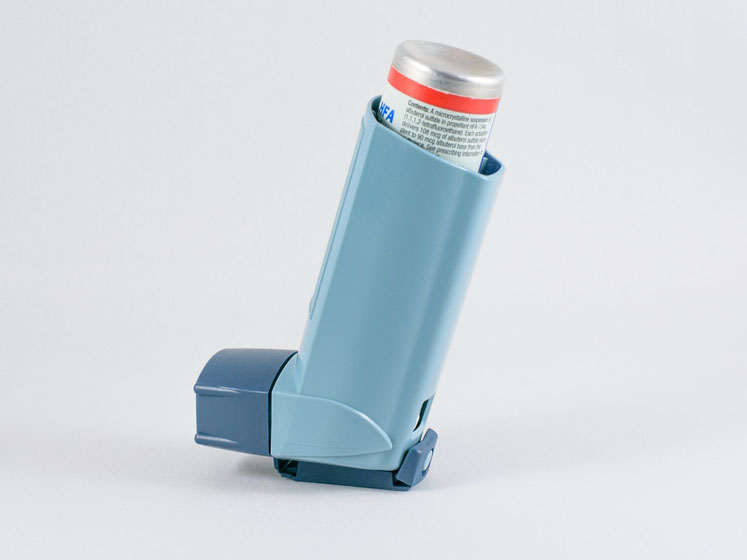Inhalation therapy is the foundation of many treatments for respiratory diseases, such as COPD and asthma, which affect hundreds of millions of people worldwide. However, there is a need for innovation that addresses the limitations of existing approaches and expands the benefits of inhalation therapy into areas beyond respiratory conditions.
Here, Dr Nveed Chaudhary, Chief Scientific and Regulatory Officer at Broughton, which offers aerosol and inhalation product development services, discusses a novel approach to inhalation therapy.
Inhalation therapy offers many advantages for the treatment of diseases of the throat, lung and oesophagus compared with the administration of tablets or capsules — the most obvious being target organ delivery. However, inhalation therapy also has distinct advantages for conditions wherein target organ delivery is not the primary focus.
One benefit is that the delivery of an active substance into the alveolar spaces of the lungs results in rapid absorption into oxygenated blood, meaning that the active substance reaches the target organ intact and more quickly.
Intravenous injections, by contrast, deliver the active substance into deoxygenated blood, which requires passage around the body before reaching the target organ. This can result in significant metabolism of the active substance before reaching its intended destination. For these reasons, inhalation therapy can achieve efficacy with a lower dose, potentially reducing the risk of side-effects and adverse events.

Achieving the desired results
The correct deposition of an active substance depends on the aerosol, the delivery device and the patient. The size of aerosol droplets is an important factor regarding where they are deposited. To ensure a high delivery to the bronchi, the particles should be fine, whereas larger particles are typically used to target the upper respiratory tract or the oesophagus.
There are four primary devices used to deliver inhaled drugs: pressurised metered dose inhalers (pMDIs), soft mist inhalers (SMIs), dry powder inhalers (DPIs) and nebulisers. Each has specific benefits and limitations … and the choice of inhaler device can significantly influence how successful any given treatment is.
There is an appetite for developing new drugs and new devices that improve patient outcomes. Owing to the abbreviated pathways available with many global regulators, it is easier to adapt an inhalation device to deliver generic drugs or refine an existing aerosol drug rather than develop an entirely new molecule for inhalation.
Adapting existing or developing new technology for inhaled drug delivery could improve the treatment of respiratory diseases and open it up as an option to deliver different active substances. For example, sildenafil (Viagra) was designed as an antihypertensive, but the high doses needed to administer it systemically in tablet form cause side-effects so notable that it is instead prescribed to treat erectile dysfunction.
Researchers are currently investigating whether sildenafil could treat hypertension if delivered via inhalation therapy — owing to the lower doses required for efficacy when administered this way.
Learning from nicotine delivery
Despite the widespread development and evolution of inhalation therapy to deliver medicines, smoking a cigarette remains one of the most effective and efficient methods of drug delivery (nicotine) to the lung; it’s one of the reasons why smoking is so addictive.
The recent advances in the development of combustion-free alternative nicotine products now make the nicotine industry an unlikely but highly relevant source of inspiration for pharmaceutical companies developing novel inhalation therapies.
Recent industry research has identified that how nicotine coalesces with water molecules is key to efficient and quick drug delivery. Pharmaceutical business Boehringer Ingelheim has previously used this concept during the development of its SMI (Respimat) and the bronchodilator tiotropium bromide (Spiriva).
This marked the first time that an active substance was delivered using inhaled water droplets … and it’s been a huge success.

Interestingly, e-cigarettes are not far behind cigarettes as a nicotine delivery mechanism, which poses an interesting question: instead of nicotine being delivered using technology similar to that used in e-cigarettes, could we administer other active molecules? This approach would be a cost-effective, easy-to-use and, potentially, very efficacious form of inhalation therapy.
Delivering a consistent dose
Two things are critical to ensure that patients can take a dose as prescribed using a drug delivery device. First, the device must deliver the active substance correctly; secondly, the patient must be able to self-administer as prescribed.
These two factors — combined — are important to ensure that any drug delivery technology can be used by a patient to dispense a consistent dose. One of the key challenges with applying coil and wick — commone-cigarette technology — to the pharmaceutical industry is its inconsistency.
If we are to use e-cigarette technology to deliver medicines, it is vital that we can overcome this and be assured that the amount of active substance administered in each inhalation is consistent.
There is currently a prescription option in the UK Marketing Authorisation Application (MAA) for e-cigarettes so that they can be prescribed by a doctor or other healthcare professional to help patients give up smoking. During this process, as with other inhaler technology, manufacturers of e-cigarettes must demonstrate delivered dose uniformity (DDU) both within and between devices.
Inhalers and e-cigarettes are fundamentally different technologies and, therefore, will not behave identically in the way they deliver drugs. Inhalers meter their dose to deliver an exact amount of aerosol per puff. By contrast, an e-cigarette is traditionally based on coil and wick technology that the patient will use to self-titrate depending on their cravings.
Discussions are therefore needed on the pMDI standard and whether it should continue to be applied to e-cigarette technology — or whether a new standard should be applied to measure e-cigarette consistency owing to the fundamental differences in the technology.
The MHRA takes this into account to a certain extent by defining a dose as 10 puffs.
Improving the consistency
There has already been progress in the nicotine industry to improve the consistency of e-cigarettes. One example is the development of ceramic heating elements that have tightly controlled specifications that improve accurate and consistent power delivery.
This is important; the amount of power delivered to the heating element responsible for vaporising the liquid will impact the amount and size of the inhaled particles, therefore impacting how much and where the drug will be deposited.
In addition, a ceramic wick is porous and can more accurately control the wicking rate and the amount of aerosol produced. Pore size can be engineered to suit different liquid formulations with varying viscosities.
Another example of how the industry is progressing in consistency, repeatability and accuracy is using capillary channels that are only a few microns wide. These use the properties of the liquid itself to draw or wick it along the channels.

Manufacturers have also developed non-heated vaping technologies based on ultrasonics, piezo-ceramic mesh and micro-nozzles (similar to that used in medical nebulisers). These technologies use atomisation rather than vaporisation, applying mechanical action to create a fine mist or spray and, subsequently, removing the need for conventional heater/coil technology.
Non-heated technologies increase the ability to manipulate and control particle size, allow a more controlled dosage and may also reduce the risk of irritation or harmful emissions from the thermal degradation of excipients used in the liquid formulation. They may also be more applicable to thermolabile APIs.
Piezo-based technology may be the most appropriate e-cigarette technology to adapt to the pharmaceutical industry’s needs. It offers the ability to fine-tune the mesh, vibration frequencies and other parameters in the device to optimise performance according to the properties of the liquid formulation. The way that technology is developing means that DDU and device consistency are unlikely to remain a concern in the future.
With these approaches more tightly controlling the amount of drug delivery per inhalation, the incorporation of smart technology can then monitor the amount of drug delivered overall. For example, by assessing how much power has been supplied, the length, frequency and number of inhalations, healthcare professionals can then look at this data to establish if the treatment regime is being followed as prescribed.
Looking forward
Applying technology developed as e-cigarettes in the pharmaceutical industry remains a novel approach and there is much research to be done in drug formulation and suspension. However, there is no reason for pharmaceutical businesses to turn away from trying to deliver active substances in this way.
This novel approach could bring many benefits to the millions of people suffering from respiratory diseases and their clinicians and other healthcare professionals. The hardware and software already exist, so the next step is for a prominent pharmaceutical player to commit to bringing the technology to market.





